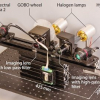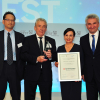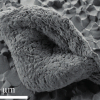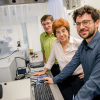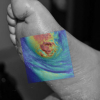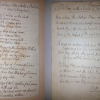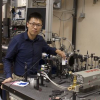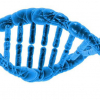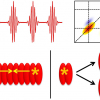Spectroscopy News
New hyperspectral camera system can capture 3D images, time and spectral information.
In the year of its 50th anniversary in Europe, Shimadzu has been awarded the NRW.INVEST Award 2018 for outstanding investments and commitment to the state of North Rhine-Westphalia, Germany.
Waters and Restek have entered into a co-marketing agreement to give food safety laboratories access to gas chromatography-mass spectrometry (GC-MS) instrumentation and consumables for pesticide residue GC-MS analyses.
A rare mineral that holds potential as a new material for industrial and medical applications has been discovered on alpine plants by Raman microscopy.
Using spectroscopic techniques including Raman and XANES, 3.4 billion year old microfossils from Western Australia’s Strelley Pool formation have been shown to be chemically similar to modern bacteria. This all but confirms the biological origins of the fossils and ranks them among the world’s oldest.
As well as being inedible, LC-MS analysis has shown that 3000+ year-old cheese was contaminated with the bacterium that causes brucellosis.
THz spectroscopy has answered seemingly simple questions about the hydration shell of charged particles which remained unanswered for a long time.
Isotope ratio MS has shown that whale sharks, the world’s largest fish, roam less than previously thought. This greater understanding of their habits is important for their conservation.
Multispectral imaging technology which could enable more targeted observation of environmental conditions on Earth is being developed in research led at the University of Strathclyde.
Researchers from Kanazawa University have reported the application of a portable and efficient method for the on-site analysis of wastewaters for the quantitative analysis of their gold, platinum and palladium content.
Columbia Engineering system could lead to a spectroscopy lab-on-a-chip for real-time sensing in the microseconds
Waters acquires exclusive rights to desorption electrospray ionisation (DESI) technology for all mass spectrometry applications from Prosolia and PRF.
Hyperspectral imaging is being used to image wounds and could provide more information to support wound care in people with leg wounds.
Electronic circuits are miniaturised to such an extent that quantum mechanical effects become noticeable. Using photoelectron spectrometers, solid-state physicists and material developers can discover more about such electron-based processes. Fraunhofer researchers have developed a new spectrometer that works in the megahertz range.
Direct infusion mass spectrometry has been used to distinguish between authenticated and forged manuscripts attributed to Scottish poet Robert Burns
Metrohm AG has acquired B&W Tek’s Spectroscopy Solution business, B&W Tek LLC, as well as several overseas subsidiaries.
Frequency modulation spectroscopy is shown to detect record low levels of OH in combustion processes.
A study recently conducted at the circular dichroism beamline (B23) at Diamond Light Source could pave the way for a new forensic DNA profiling technique.
Generally, only the behaviour of a single excitation and its consequences are investigated in 2D spectroscopy, but new techniques are being developed using two excitations.
Ten times more sensitive than current techniques, the size exclusion chromatography-inductively coupled plasma mass spectrometry technique allows, from a blood serum sample, the simultaneous detection of different biomarkers related to cancer.

